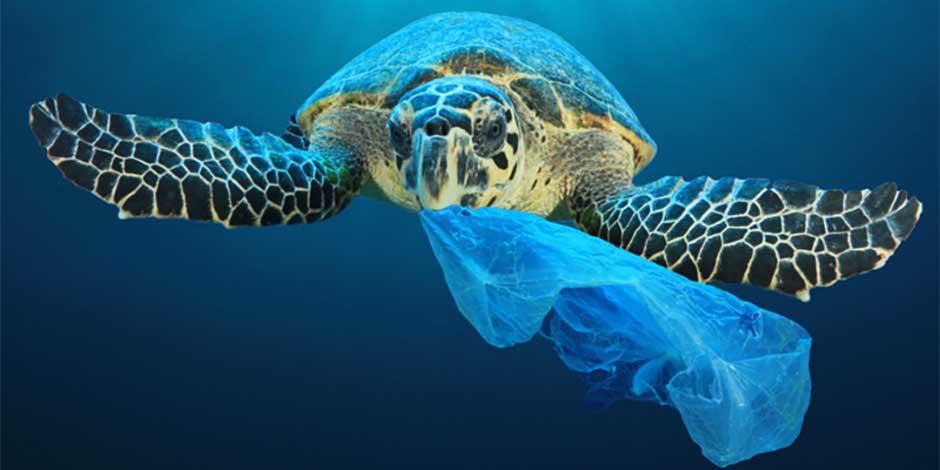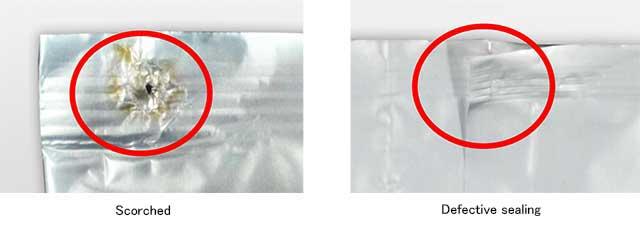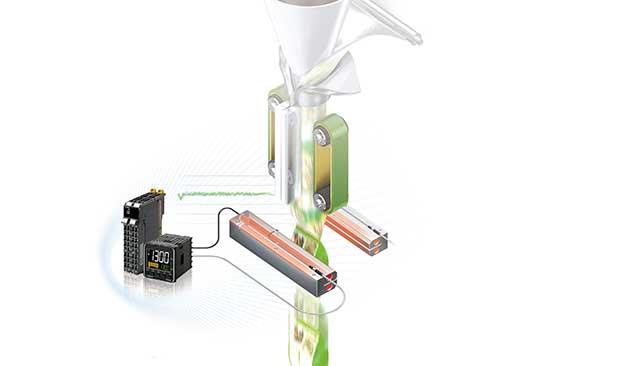
Marine plastic waste is a universal problem globally. About half of plastics that enter oceans are packaging materials such as containers and wrapping. In a bid to reduce such environmental impact, manufacturers from around the world are desperately seeking ways to switch their plastic packaging materials to eco-friendly alternatives. The tricky part with this is that, because finer temperature control is required when applying heat to seal packages of new materials, the temperature often gets too high with conventional techniques, creating holes in the packaging materials, which results in a high percentage of defects. With the determination to solve the social issue of marine plastic waste, OMRON embarked on the challenging task of developing innovative temperature controllers that would significantly reduce packaging defects.
ŃĆĆ
Plastic bottles and containers washed up on the beach, plastic bags drifting in the ocean... The massive amount of marine plastic waste has become a serious problem all over the world. Over eight million tons of plastic waste enters the ocean every year. If no action is taken, some sources estimate that by 2025, the cummulative amount of plastics dumped in oceans will be approximately one billilion tons, outweighing all the fish in seas. Plastic waste in oceans has a multitude of harmful effects on the marine environment, including its ecosystem. It not only harms and destroys marine organisms but also pollutes the seas and eventually threatens human health and lives.
To address these concerns, efforts are underway across the globe to reduce the use of plastics. In the industrial sector, many companies are trying to swtich from plastic materials to paper materials, thinner plastics, or biodegradable plastics (ones that dissolve in the natural environment) for their containers and packaging materials. Yet the switch to eco-friendly packaging materials is not as easy as it may seem. This is because of the difference in thermal reactivity between new packaging materials and conventional plastic ones. Usually, when you package products, you apply heat to adhere packaging materials to seal packages. The problem here is that paper packaging materials do not conduct heat well, and thin-walled plastics and biodegradable plastics have such low thermal tolerance that they do not glue well, shrink by heat causing wrinkling, or get scorched or melt, with the result that you have unacceptable amounts of defective packages with conventional packaging machines once you switch to eco-friendly materials. This has deterred many companies from changing their packaging materials.

This paradoxical impasse came to the attention of Miho Nishide, who was developing temperature controllers at the product planning team of the Components Division, Product Business Division HQ. OMRON has a history of more than 50 years of developing and manufacturing temperature controllers for a wide array of industries and is among the largest players in the global market. Out of the sincere wish to address the social issues caused by marine plastic waste by leveraging OMRON's technology to expedite the introduction of eco-friendly packaging materials, she launched her attempt to develop new temperature controllers.
ŃĆĆ
With common automatic packaging machines, once the package is filled with products, it is sealed at the mouth by metal bars heated to a high temperature ("sealing bars"). What is important here is to keep the proper temperature on the surfaces of sealing bars. If the temperature is even marginally lower or higher, you will get packaging defects. "Our goal was to reduce the temperature fluctuation on the sealing surfaces during the packaging process to one-tenth that of conventional machines," recalls Nishide. Soon she would realize that it was an unexpectedly daunting challenge even with OMRON's 50-plus years of experience and cutting-edge temperature control technology.
How can a packaging defect occur when the temperature is set right? At first, members of her team didn't even understand its mechanism. "Can we really solve this with OMRON's technology?" "Given the sheer variety of materials, thickness, and the number of layers, there would be tens of thousands of types of packaging materials, and it's simply impossible to support all of them..." Members' unease grew more pronounced day by day. Yet, they didn't back down but chose to keep going. What provided this forward drive? "We didn't start this project because we wanted to enhance the performance or specs of temperature controllers. Rather, we had an overriding goal of solving the social issue caused by marine plastic waste as a way to contribute to the global community. We knew that no one else could offer solutions to this universal issue, and that helped us to overcome the many emotional conflicts that we encountered," answers Nishide.
The emotions shared by the team members grew into a circle of empathy that involved their peers from outside. "Before we knew it, we had a circle of supporters from other departments. Not only that, customers who had purchased temperature controllers for packaging machines from us were generous enough to educate us on the mechanism of packaging machines and tell us under what conditions sealing defects occurred at their line. Those altruistic customers numbered as many as 82."
To reach a solution, the members read a total of 1,437 pages of academic papers and other reference literature. Because they felt they lacked knowledge on packaging machines, they installed a flow wrapper machine within the development area to create a complete packaging line. Here, to build technological knowledge, they conducted sealing experiments over and over using packaging materials more than 10 km long.
ŃĆĆ
Finally, they pinned down the cause of sealing defects: When sealing bars hold packaging materials, heat on the sealing surfaces is lost, lowering the temperature. To solve this problem, it was necessary to accurately measure temperature on the surfaces of the sealing bars. Yet, it was not easy to sense fast-moving bars and simultaneously monitor their temperature in real time. Because conventional temperature sensors for packaging machines were positioned away from the sealing surfaces due to their heat resistance and other properties, it was not an easy task to accurately measure the temperature on the sealing surfaces. So, Nishide and her team members went back to the drawing board to take a fresh look at the sensor's materials and structure. They increased the sensor's heat resistance, as well as its responsiveness, so that it could follow the fast-moving sealing bars, successfully measuring the temperature on the sealing surfaces.

But accurately measuring temperature alone was not enough. Their controller needed to control the temperature that rapidly fluctuates to keep it constant. So they improved the temperature control algorithm and introduced AI technology, making it possible to precisely control temperature by having parameters automatically adjusted in response to temperature fluctuations.
What resulted was a technology for real-time temperature sensing on the fast-moving sealing surfaces and another for automatic parameter adjustments to precisely control temperature. By honing these two, they made an innovative application that reduces temperature change on the sealing surfaces to one-tenth, regardless of types of packaging materials. In 2018, they launched AI-embedded temperature controllers that feature this app, which is now known as the Perfect Sealing solution.
ŃĆĆ
OMRON's Perfect Sealing Solution was met with great surprise and acclaim by customers. "A globally leading company that had never used OMRON products before decided to use the Solution and joyously reported that they were able to reduce temperature fluctuation during the sealing process to 0.7┬║C, when it was previously over 8┬║C at the highest," claims Nishide proudly.
Such was the response from the market, they became eager to pitch the Perfect Sealing Solution to more customers, eventually replacing plastic packaging materials with eco-friendly ones across the world. This led them to assemble a portable, high-performance packaging machine one-twentieth the size of the real one for demonstrations. Other members of the OMRON Group bring it to prospective customers in Europe, Southeast Asia, the US, and elsewhere to show them how it works and let them know about the value it can create for them. If the number of packaging machines equivalent to the total unit sales of OMRON's temperature controllers with the Perfect Sealing Solution switched their packaging materials from conventional plastics to eco-friendly ones, we would have contributed to the reduction of approximately one million tons of plastic waste. In terms of the length of packaging materials, it is as long as 18.58 million kilometers.
Yet OMRON is not resting on its laurels and has embarked on a new project. This time, we are planning to increase the variety of packaging materials' forms that our temperature controllers can handle to expand beyond flow wrapping. Also planned is a roll-out of this technology to plastic bottles, stick packages, and other packages whose production process differs completely from bag packages.
"Temperature controllers and the marine plastic waste problem--At a glance, you may think they have nothing to do with each other, but if you think carefully, there are many social issues that we should address," Nishide concludes. We will continue working hard to solve social issues to be challgenged in various industrial fields as we make the most of our technological prowess.
